9+ Sample Audit Risk Assessments
-
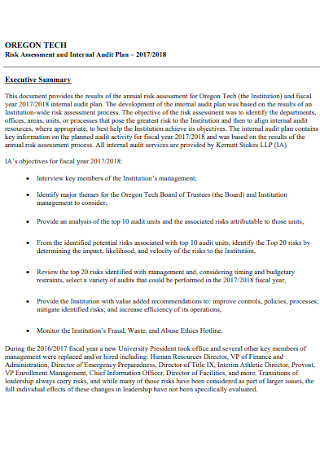
Risk Assessment and Audit Plan
download now -
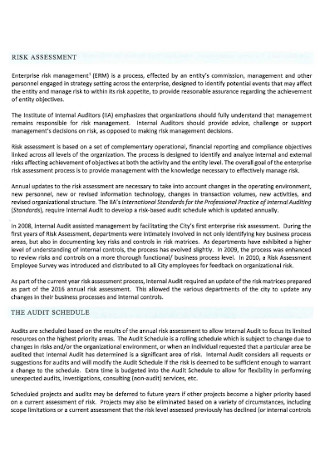
Audit Risk Assessment Schedule
download now -

Sample Audit Risk Assessment
download now -
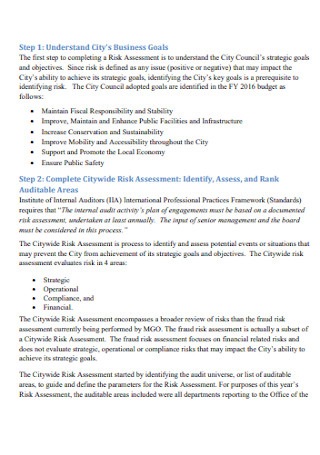
Annual Audit Risk Assessment
download now -
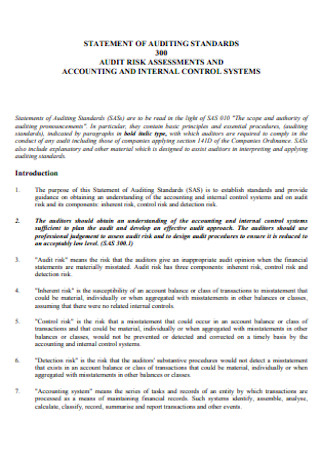
Standard Audit Risk Assessment
download now -
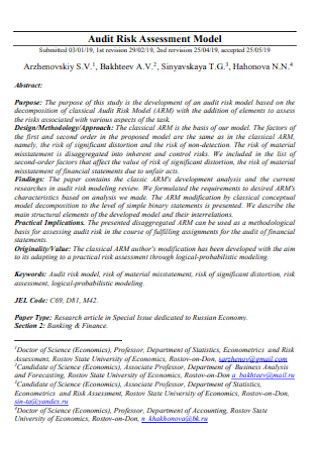
Audit Risk Assessment Format
download now -
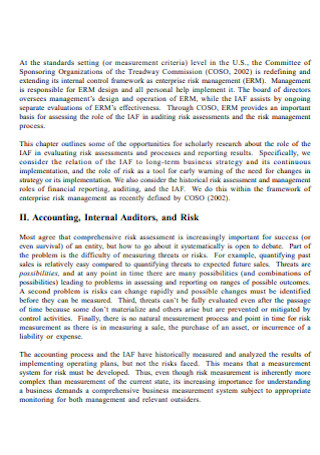
Audit Accounting Risk Assessment
download now -
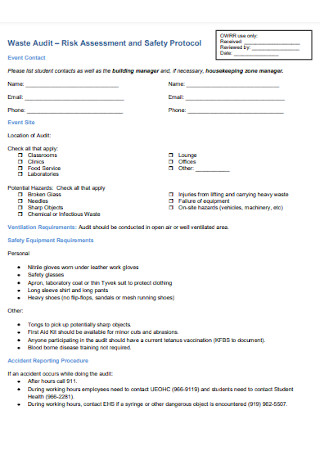
Audit Risk Assessment and Safety
download now -
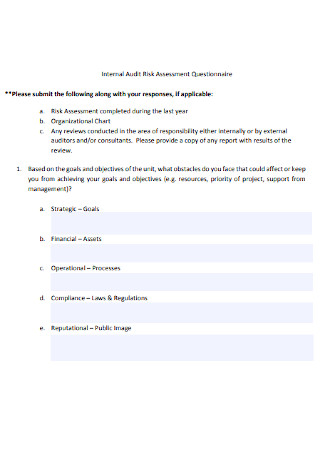
Internal Audit Risk Assessment
download now -
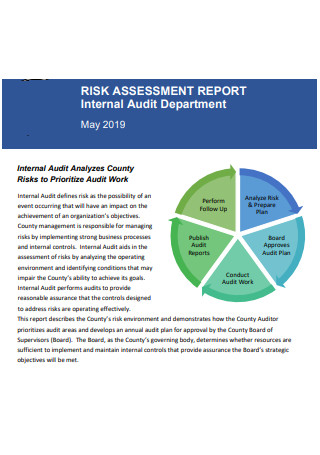
Audit Risk Assessment Report
download now
FREE Audit Risk Assessment s to Download
9+ Sample Audit Risk Assessments
an Audit Risk Assessment?
Benefits of an Audit Risk Assessment
Tips on Assessing Risk Assessment Process
How To Conduct an Audit Risk Assessment
FAQs
Which audit risks are illustrative?
What level of audit risk is acceptable?
How do you mitigate the risk of an audit?
What Is an Audit Risk Assessment?
An audit risk assessment is a review or evaluation of the conducted to understand the business and its environment better. This includes internal controls, identifying and assessing the risk of material misstatement of financial statements due to fraud or error. According to IRS data, approximately 1% of taxpayers are audited. However, your chances slightly increase if you own a small business, as roughly 2.5 percent of small business owners face an audit.
Benefits of an Audit Risk Assessment
Inviting an objective third party to understand the organization better is a priceless resource that companies take advantage of. External audits accomplish various objectives, including identifying and preventing material misstatement, evaluating business operations and making recommendations for improvement, assessing your policies and procedures to ensure compliance with industry regulations and standards. The list could go on and on. Whatever the objective, external auditors must take the time to evaluate risk from the start to develop a strong audit plan and strategy moving forward. When conducted properly, an audit risk assessment assists you in performing your job more effectively. It provides auditors with insight into the most efficient use of their time. You can infer what you need to do and what you can skip, which will help your audit be more efficient and effective. Risk assessments also provide several additional significant benefits to your audit process.
Tips on Assessing Risk Assessment Process
Enterprise risk management that is effective is becoming increasingly critical in today’s regulatory environment. Regulators and rating agencies anticipate that businesses will have a firm grasp of their risk profiles and have implemented the necessary governance structures to mitigate those risks. Conducting a risk assessment enables management to gain a holistic view of the risks it faces, allowing them to identify and capitalize on opportunities.
1. Identify the risk of your business.
Consider your definition of risk. A standard illustration of risk is any event that impairs your ability to accomplish your business objectives. Risks impact a business’s ability to survive, compete successfully within its industry, and maintain its financial strength and favorable public image, as well as the overall quality of its products, services, and people. Consider risks from your perspective within the organization, taking your group’s SMART goals and objectives into account.
2. Determine who is responsible for your risks.
You should recognize the most appropriate person to monitor and manage each risk in your risk library – in other words, the risk owner – for each risk. The risk owner is accountable for risk assessment and identification of associated controls. Additionally, this role is responsible for implementing and maintaining appropriate authorities within its assigned area of responsibility and reporting control or risk appetite violations. Each risk may have multiple risk owners.
3. Identify risk mitigation and risk reduction controls.
Collaborating with risk owners, determine the current controls in place to mitigate or reduce risk. For instance, investment guidelines contribute to the reduction of “Equity Risk.” Additionally, each control should have an owner or responsible party. This can be a functional responsibility rather than one assigned to an individual or specific individual.
4. Evaluate the potential and impact of risk.
Its assessment of the risk-reward trade-off determines the company’s risk tolerance. Assessing the financial impact and probability of risk can assist management in determining whether the company is operating within its stated risk appetite and whether the risk should be accepted, rejected, or reduced.
5. Revisit
Risk assessment is a continuous method that should be conducted at least annually and preferably more frequently if your company’s risk profile has changed significantly. Additionally, it is beneficial to revisit the company risk library annually as risks and definitions evolve and change over time.
How To Conduct an Audit Risk Assessment
Today, we’ll discuss one of the most misunderstood aspects of auditing: risk assessment. Are auditors squandering money by omitting risk assessment? Is it possible that preliminary risk assessment results in peer review findings? This part will walk you through the process of conducting an audit risk assessment. If you’re still curious, scroll down to read more.
Step 1: Recognizing the nature of the business.
It would help if you first gain an understanding of the company whose audit you will conduct. Also, it would help if you determine whether the organization is subject to external regulatory oversight. Remember to understand the business strategy of the company.
Step 2: Examining the quality management system of the organization.
A critical component of the audit risk management process is examining the organization’s quality management system. It is essential to understand an organization’s management system to comprehend it. This can be accomplished through interviews, keeping track of an employee’s turnover, and so forth. Additionally, you can understand it by determining the tenure of the organization’s president, chief financial officer, and chief executive officer. Also, you can examine a positive indicator of quality management plans if prior audits reveal fewer accounting adjustments or no financial statement restatement.
Step 3: Collect data from employees.
The best way to gain a holistic view of the business, its people in higher positions, and so forth is to interview and speak with various employees from various departments. This will enable you to obtain more information than you would from management employees. For instance, if you inquire about the payroll department with a management employee, they may not provide you with an adequate response or information. However, if you ask about the payroll department with an employee, you will receive a more detailed response.
Step 4: Client Observation
Visiting a business location, a company, or a department allows you to gain firsthand experience. You will be able to obtain additional information beyond what is recorded in the books and records. You can earn a better understanding by looking at the company’s operation process.
FAQs
Which audit risks are illustrative?
Audit risks are classified into three kinds: detection risks, control risks, and inherent risks. This means that the auditor misses misstatements and errors in the company’s financial statements, and as a result, issues an incorrect opinion on those statements.
What level of audit risk is acceptable?
Acceptable audit risk refers to the auditor’s willingness to issue an unqualified opinion in the event of material misstatement of financial statements. As the auditor’s tolerance for audit risk increases, he is willing to collect less evidence and thus accept a greater detection risk.
How do you mitigate the risk of an audit?
Risk management must manage identified risks to assist the business in meeting its performance and profitability targets, prevent resource loss, ensure reliable financial reporting, adhere to applicable laws and regulations, and avoid reputational damage and other negative consequences.
While gaining an understanding of your business is self-explanatory, our objective in gaining an experience of your internal control is to determine whether you, with the oversight of those charged with governance, have established and maintained a culture of honest and ethical behavior. Additionally, we look for company risks relevant to financial reporting and estimate their significance and likelihood of occurrence to assist in determining which audit procedures are necessary to address those risks. While our discussions with management assist us in developing an understanding of internal controls, we also require examples of these controls in action.
Analytical procedures such as comparing significant financial statement line items and the financial ratios derived from those line items are performed. These are compared to our expectations, which are based on discussions with key management personnel and other publicly available industry data, to identify any additional areas of risk associated with the financial statements that could affect the audit. In summary, if an audit serves as the entree, risk assessment serves as the appetizer. It provides us with data used for the current fiscal year and future fiscal years. Audit risk assessment procedures are a critical component of any audit and are treated as such by us and, hopefully, your organization as well.
